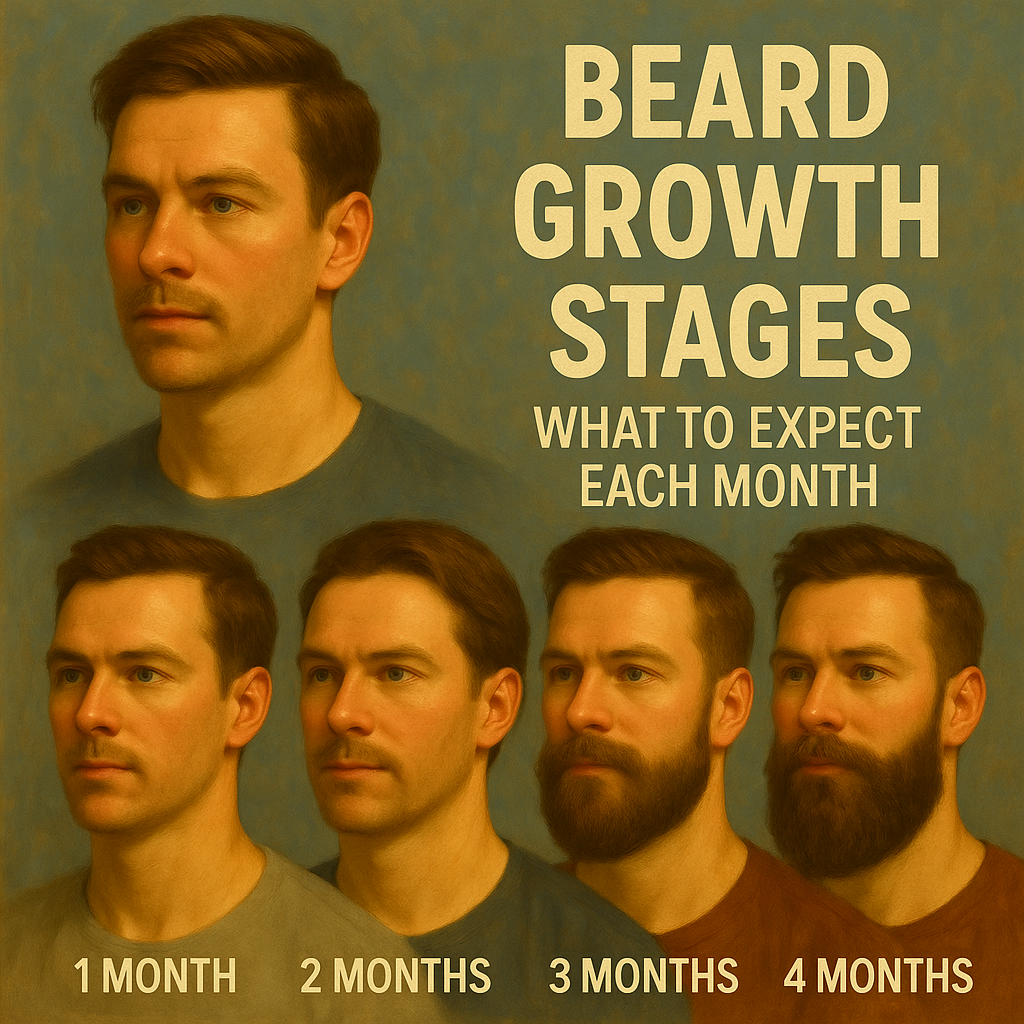
Growing a beard takes time, patience, and a little understanding of what’s happening beneath the surface. Every man’s beard grows at a different rate, but most follow the same basic pattern. Knowing what to expect each month can help you stay motivated and avoid common mistakes during the process.
Month 1: The Stubble Phase
This is the foundation of your beard journey. During the first few weeks, you’ll experience stubble and uneven patches as hair starts to emerge.
- It may look scruffy or uneven — that’s completely normal.
- Avoid trimming too early; give it time to fill in.
- Keep the skin clean and moisturized to prevent itchiness.
What to Expect:
Mild itching, patchy areas, and noticeable new growth on the chin and jawline.
Month 2: The Itch and Awkward Phase
Around this time, your beard will start to show real progress — but it can also get uncomfortable. The itchiness peaks here, as short hairs curl and irritate the skin.
- Use a gentle beard shampoo and conditioner.
- Apply beard oil to soften the new growth.
- Resist the urge to shave — this phase is temporary.
What to Expect:
Visible coverage, stronger jawline definition, and thicker texture starting to form.
Month 3: The Shaping Phase
At this point, your beard has enough length to start taking shape. You can begin light grooming to define your neckline and cheek lines.
- Trim stray hairs with scissors or a trimmer.
- Continue hydrating with beard oil or balm.
- Use a beard comb to train the direction of growth.
What to Expect:
Noticeable fullness and the beginnings of your preferred beard style.
Month 4–5: The Fullness Phase
Now your beard starts to feel like a beard. Density improves, patches begin to blend, and your beard develops its natural texture.
- Focus on even growth and regular brushing.
- Maintain hydration to prevent dryness and split ends.
- You can experiment with light styling and shaping.
What to Expect:
Fuller coverage across the cheeks and jaw, reduced patchiness, and an established beard shape.
Month 6 and Beyond: The Mature Beard
By the six-month mark, you’re in mature beard territory. Your beard has settled into its natural growth pattern, and you can now style or maintain it according to your goals.
- Continue regular washing, oiling, and combing.
- Trim every few weeks to keep it looking healthy.
- Celebrate your patience — this is your beard’s full expression.
What to Expect:
Thick, full coverage with minimal patchiness. You now have control over style, length, and overall appearance.
Key Takeaways
- Beard growth takes time — typically 4–6 months for a full beard.
- Each stage brings new challenges and opportunities for grooming.
- Consistency and patience are key to achieving a healthy, well-shaped beard.
